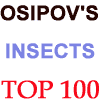Hylesia umbratula
|
|
Updated as per Lemaire's Hemileucinae, 2002, May 2007
|
Hylesia umbratula
Dyar, 1915

Hylesia umbratula
courtesy of Manuel Balcazar-Lara.
TAXONOMY:
Superfamily: Bombycoidea, Latreille, 1802
Family: Saturniidae, Boisduval, [1837] 1834
Subfamily: Hemileucinae, Grote & Robinson, 1866
Tribe: Hemileucinae, Grote & Robinson, 1866
Genus: Hylesia, Hubner, [1820]
|
MIDI MUSIC
"Someone to Watch
Over Me"
copyright C. Odenkirk
MIDI CITY
ON.OFF
<bgsound src="watch.mid" LOOP=FOREVER>
|
DISTRIBUTION:
Hylesia umbratula
(wingspan: males: 42-48mm; females: 53-57mm) flies in
Mexico: Tabasco, Chiapas, Quintana Roo;
Belize: Cayo;
Guatemala: El Peten; and
? Ecuador: ? Los Rios, ? Manabi; and probably in
Colombia if the Ecuadorian records are correct.
It may also be in Honduras: Copan; Costa Rica and Panama in deciduous
forests, but Lemaire indicates umbratula may just be a dry
seasonal form of umbrata. If a good species, it may be limited
to Mexico, Belize and Guatemala.

Hylesia umbratula female, wingspan 55mm, Copan, Honduras, courtesy of
Dr. Ronald D. Cave,
tentative id by Bill Oehlke
Ground colour of the wings is lighter than that of very similar
Hylesia umbrata, and the abdomen is yellowish brown instead of
the rosy brown of umbrata. Lemaire indicates he found no difference in the
genitalia of the two species and indicates H. umbratula may be a dry
seasonal form of H.umbrata.
FLIGHT TIMES AND PREFERRED FOOD PLANTS:
Larval hosts are
unknown.
Specimens have been taken in February, July-August-September-October.
ECLOSION, SCENTING AND MATING:
Females extend a scent gland from the tip of the abdomen,
and the night-flying males pickup and track the airbourne pheromone plume with their well-developed antennae.
EGGS, LARVAE, COCOONS AND PUPAE:
Eggs are deposited in clusters
on hostplant foliage.
Hylesia umbratula larvae are highly gregarious and have the
urticating spines typical of larvae from the Subfamily Hemileucinae.
Larval Food Plants
It is hoped that this
alphabetical listing followed by the common name of the foodplant will
prove useful. The list is not exhaustive. Experimenting with closely
related foodplants is worthwhile.
Use your browser "Back" button to return to the previous page.
Return to Hylesia Index
Goto Mexico and Central American Saturniidae Directory
Goto South American Saturniidae Directory
Goto Main Saturniidae Index

| 
Support this website and visit other insect sites by
clicking flashing butterfly links to left or right.
|

|
Use your browser "Back" button to return to the previous page.





